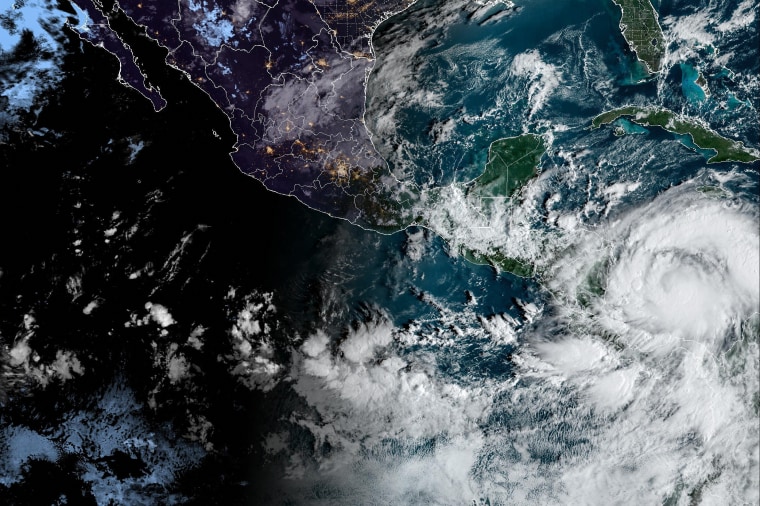MEXICO CITY — Winds of up to 60 mph battered Nicaragua as Tropical Storm Julia moved across the country on Sunday, forecasters said.
The tropical storm is about 20 miles north-northeast of the capital city of Managua, and moving westward at about 16 miles per hour, the National Hurricane Center said in a Sunday afternoon bulletin.
Julia is expected to move off the country's Pacific coast by this evening before moving parallel to the Pacific coasts of Honduras, El Salvador and Guatemala Sunday night and Monday.
“Julia is expected to dissipate near the coast of Guatemala by Monday night,” the hurricane center said.
Julia strengthened from a tropical to a Category 1 hurricane Saturday evening, with winds of up to 75 mph, the NHC said in a Saturday night bulletin.
But by Sunday morning, the reduced winds meant Julia had been downgraded to a tropical storm.
Federal forecasters said life-threatening flash floods and mud slides were possible in Nicaragua and southern Mexico.
Tropical storm conditions are expected in the next 24 hours on the pacific coasts of both Nicaragua and Honduras, and on the coast of El Salvador, according to the most recent NHC bulletin.
Tropical storm conditions are possible on the pacific coast of Guatemala within the next 24 to 36 hours, the NHC said.
Officials in the region spent the lead-up preparing for the storm and warning residents to take cover.
Colombian President Gustavo Petro declared a “maximum alert” on the islands and asked hotels to prepare space to shelter the vulnerable population. Officials on San Andres imposed a curfew for residents at 6 a.m. Saturday to limit people in the streets. Air operations to the islands were suspended.
On Sunday morning, Petro tweeted that the hurricane left "slight damage" in San Andres, leaving two people injured, two homes destroyed and 101 homes damaged, adding that the hurricane's impacts on the Isla de Providencia were "lighter."
Similar precautions had been underway in the central area of Nicaragua’s Caribbean coast, where authorities issued an alert for all types of vessels to seek safe harbor.
On Saturday, Nicaraguan soldiers began preparing the evacuation of inhabitants of islands and cays around the town of Sandy Bay Sirpi. The army said it delivered humanitarian supplies to the municipalities of Bluefields and Laguna de Perlas for distribution to 118 temporary shelters.
A greater threat than Julia’s winds were rains of 4 to 10 inches — up to 15 inches in isolated areas — that the storm was expected to dump across Central America.
“This rainfall may cause life-threatening flash floods and mudslides across Central America today and Monday,” the National Hurricane Center said Sunday.
Julia's swells are also expected to cause "life-threatening surf and rip current conditions," the hurricane center said.
It’s the fifth hurricane of the 2022 Atlantic tropical cyclone season.

